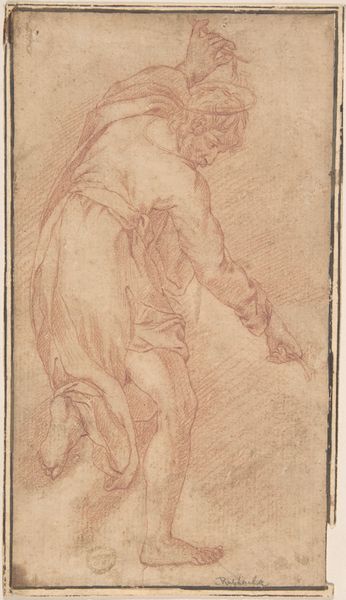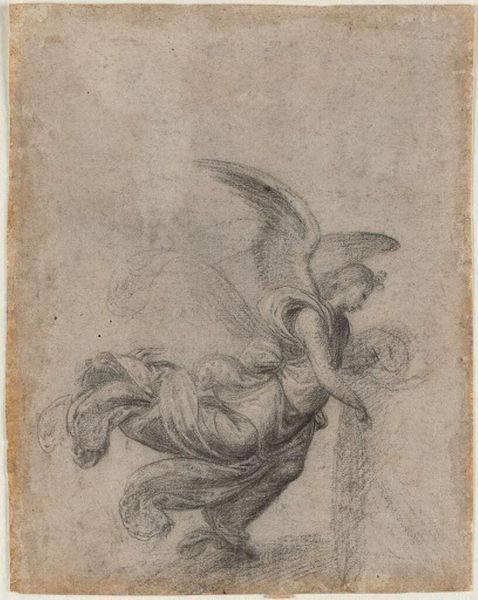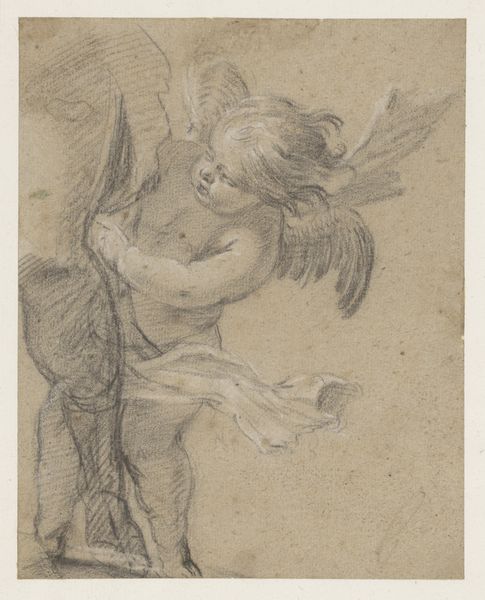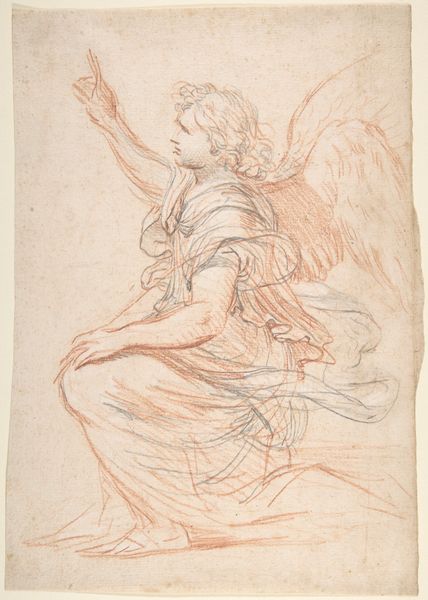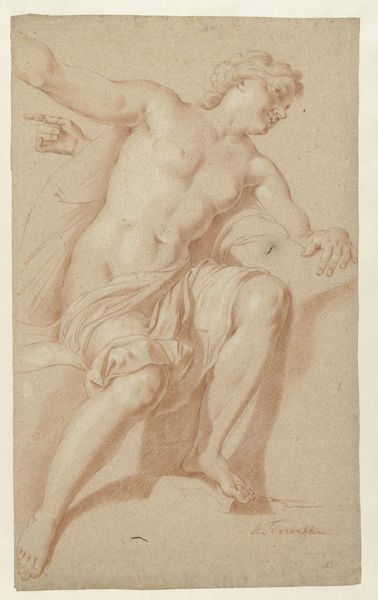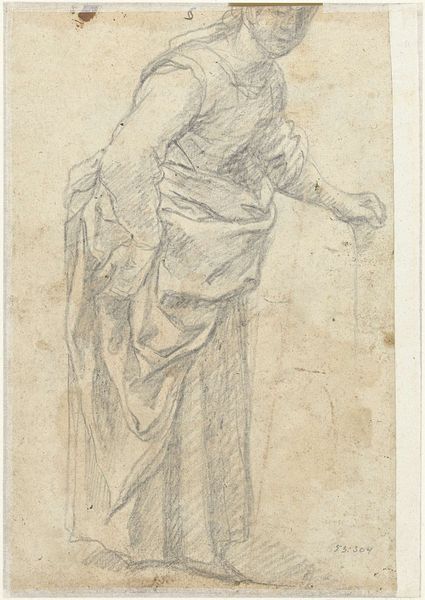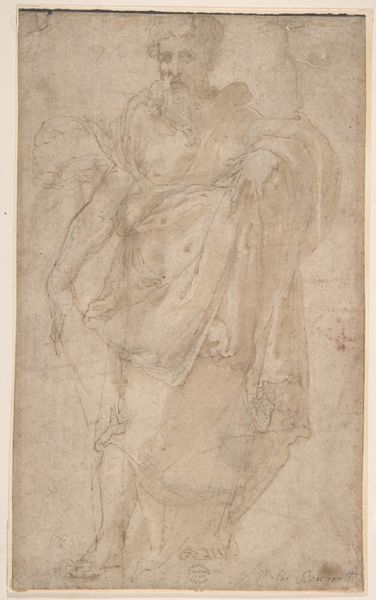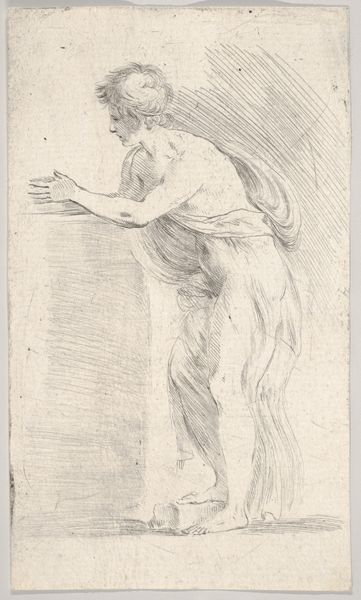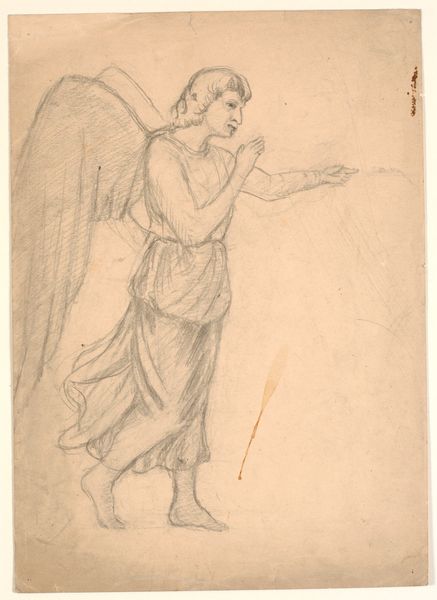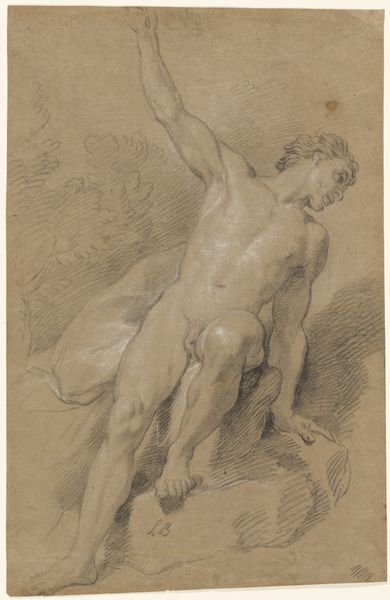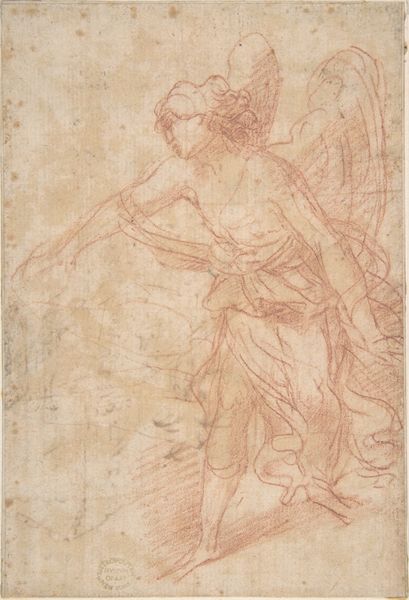
drawing, paper, pencil
#
drawing
#
allegory
#
baroque
#
figuration
#
paper
#
pencil
#
academic-art
#
nude
Dimensions: height 256 mm, width 178 mm
Copyright: Rijks Museum: Open Domain
Curator: Let’s turn our attention to this study, Engel in aanbidding, or Angel in Adoration, created between 1630 and 1690 by Charles Le Brun. It's rendered in pencil on paper. Editor: My first impression is one of stillness and deep contemplation, an almost melancholic grace. The simplicity of the pencil work is quite moving. Curator: The image certainly draws on familiar iconography. The angel, a classic symbol of divine intervention and grace, kneels in a gesture of supplication. What's striking is how Le Brun uses the Baroque aesthetic—dramatic lighting, flowing drapery—to convey this spiritual intensity. Editor: Indeed. The flowing drapery isn’t just ornamental; it reveals the figure. I am also intrigued by the medium – why drawing? A study such as this foregrounds process and its role. We see the artist experimenting with light, shadow, and form. It shows the materiality of preparation, labour... the kind of the underbelly of the so-called masterpieces! Curator: A very fair point. As a study, it would inform the planning of larger, finished pieces, but it also embodies its own completeness, an almost primal rendering of spiritual form and inner experience. Note how the figure almost recoils from the unseen entity towards which its praying. The artist plays with light to dramatize the angel’s devotion. Editor: I agree it offers us intimacy with creative practice, an immediacy missing in, say, an oil painting. Yet the ‘primal rendering’ you suggest can also apply to the angel: stripped from its divine aura, it also becomes flesh. Look at the way Le Brun uses the bare minimum to capture the body. The sketch is both a testament to idealization and demystification. Curator: Well, seeing how different methods offer access to both divine idealization and humanized figuration helps reveal the true resonance this study still possesses. Editor: I find the humbleness and modesty in its raw lines almost radical, a gesture of honesty about labor as something sacred.
Comments
No comments
Be the first to comment and join the conversation on the ultimate creative platform.
